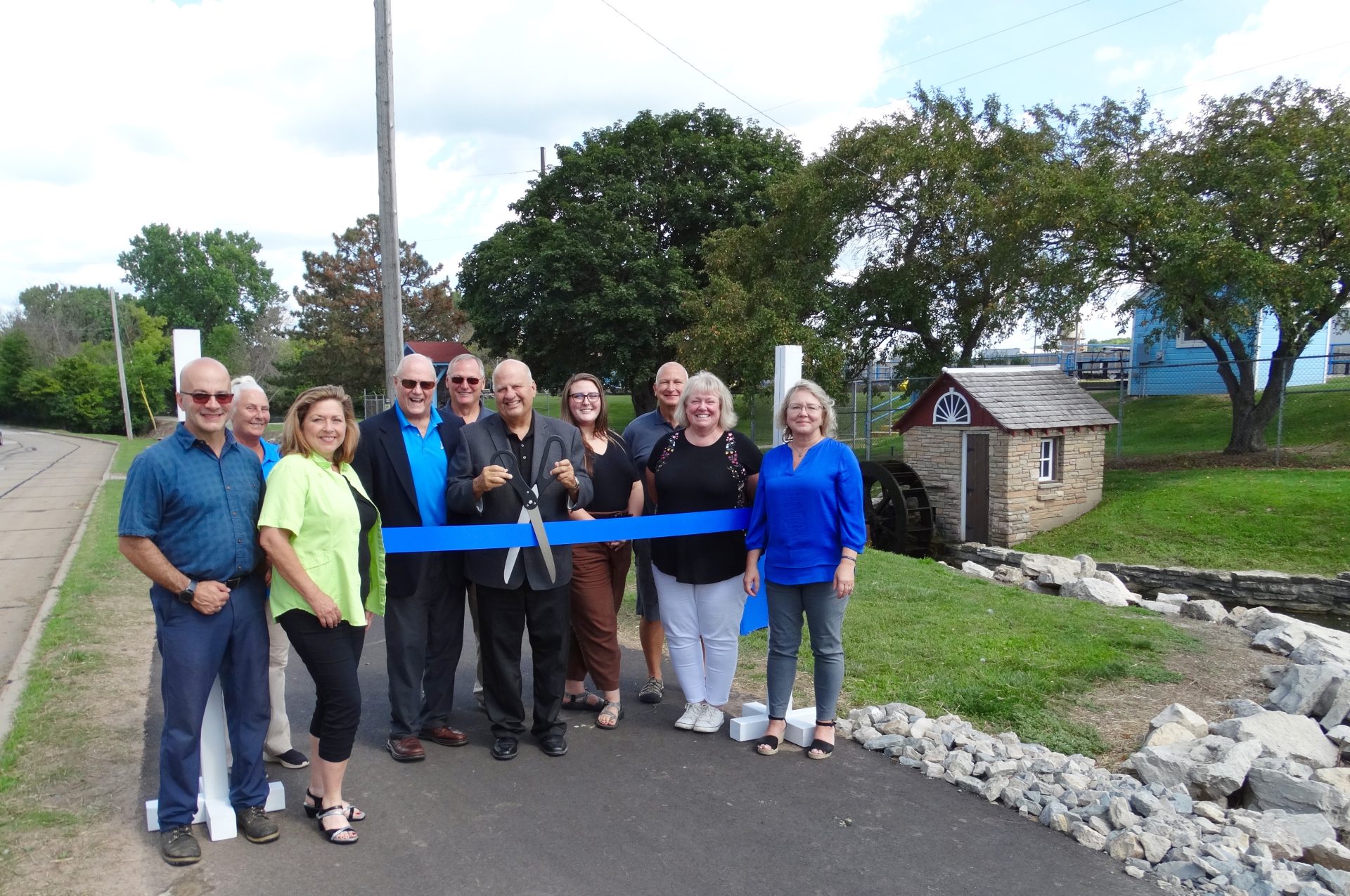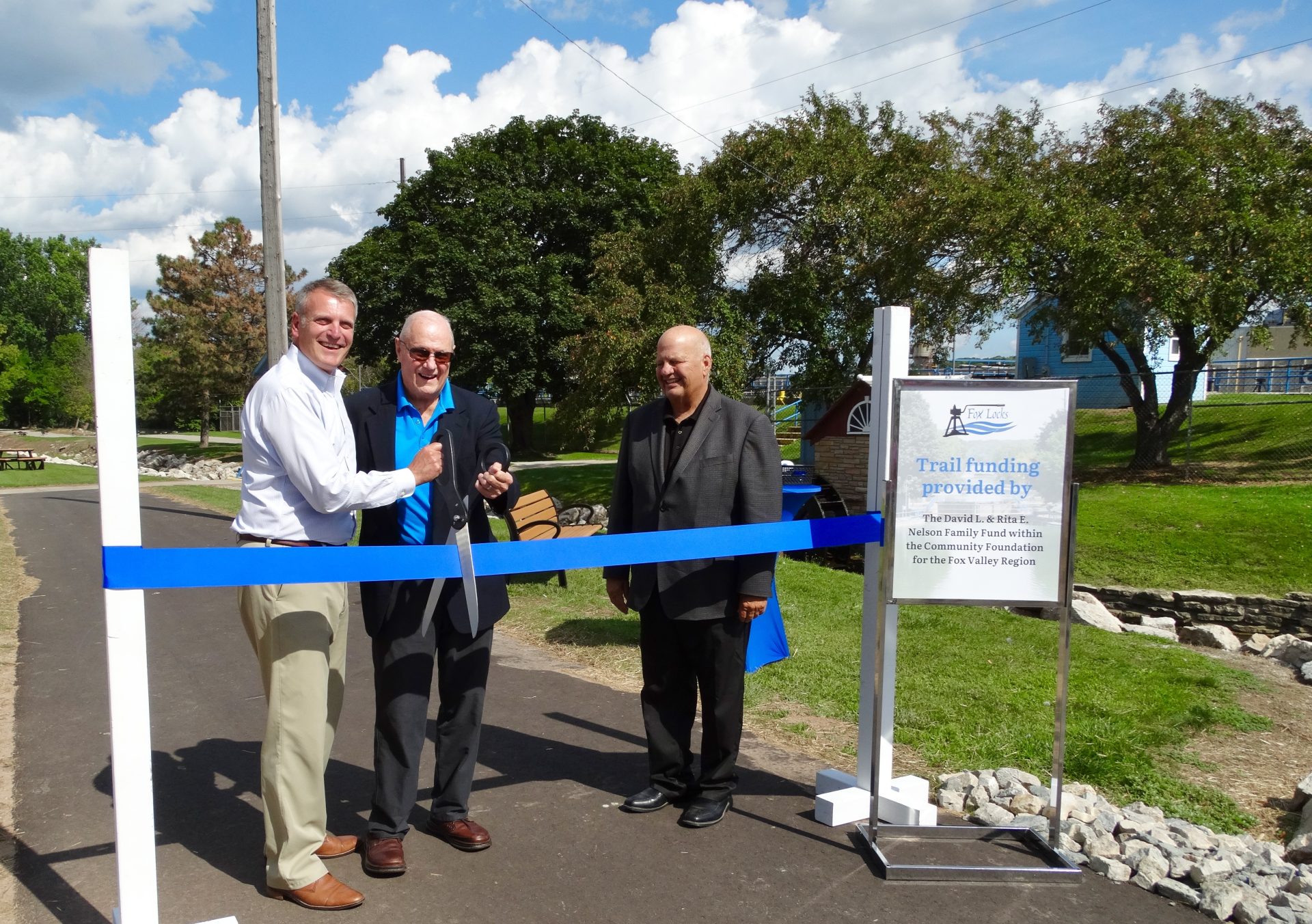Kaukauna Locks Trail opens to public

FRNSA board of directors members and staff pose in front of the ribbon ready to dedicate the Kaukauna Locks Trail
Years of hard work and extreme generosity from funders made the Kaukauna Locks Trail a reality today! Representatives from the Fox Locks board of directors, community leaders, elected officials, and regional attractions gathered in Kaukauna today to dedicate and cut the ribbon on the new trail.
The 1.3-mile recreational trail runs adjacent to the five Kaukauna locks and is a reality thanks to a $300,000 grant from the David L. and Rita E. Nelson Family Fund within the Community Foundation for the Fox Valley Region (CFFVR). CEO of the Community Foundation Curt Detjen thanked the board members and partners of the Fox Locks for making the trail a reality and said it was part of the Nelson family’s vision to aid organizations in the Kaukauna region.
The trail is now open for public use!

L-R, CEO of the Community Foundation Curt Detjen and FRNSA Board Chair Ron Van De Hey get ready to cut the ribbon while FRNSA Executive Director Phil Ramlet looks on.
Blog – Fox Locks
http://foxlocks.org/2022/08/17/kaukauna-locks-trail-opens-to-public/






